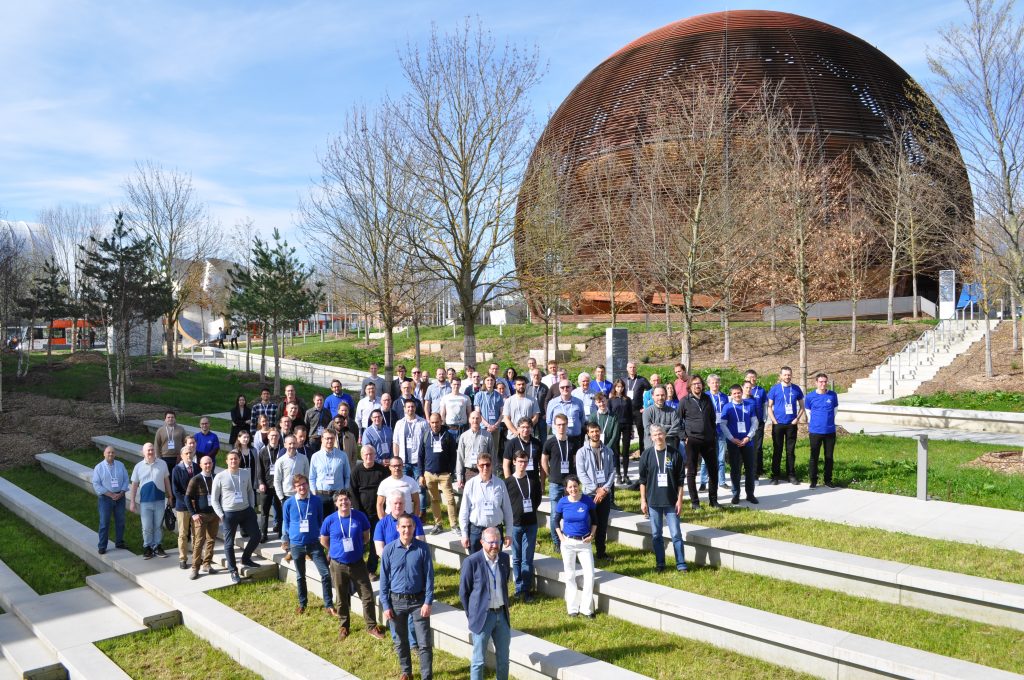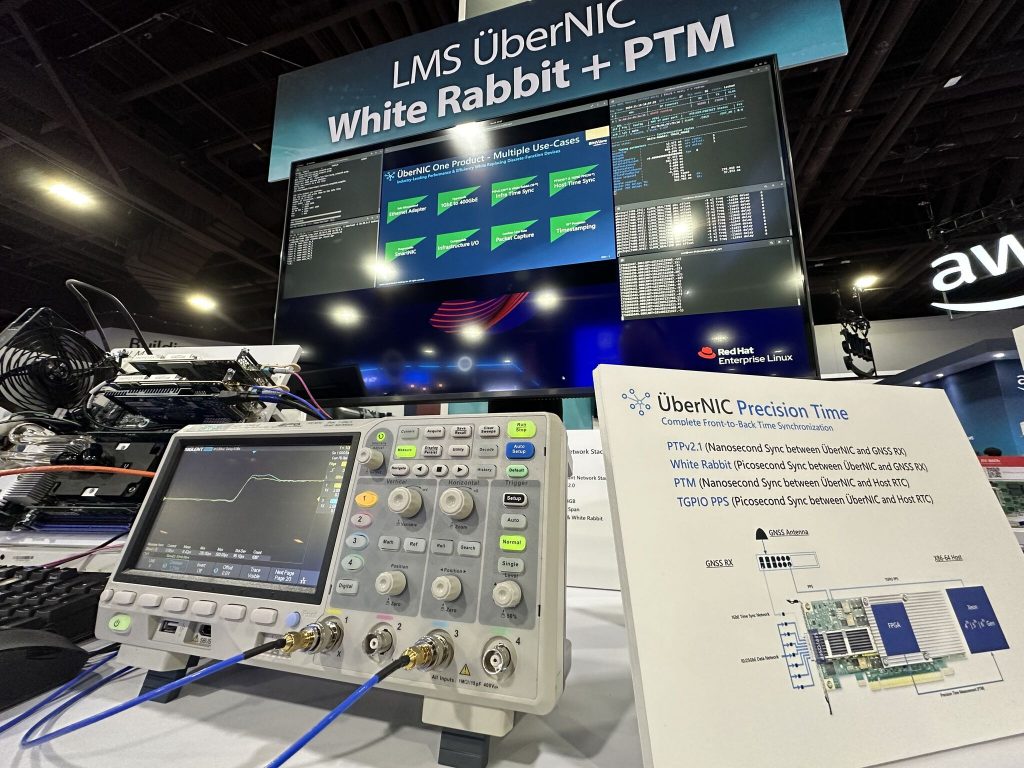6 minutes read
White Rabbit Collaboration: A Year of Growth, Innovation, and Industry Adoption
From eight founding partners to 18 members in just a year, the White Rabbit (WR) Collaboration has proven the interest of industry and public entities in joining forces to exploit, maintain and develop the open-source White Rabbit technology for the benefit of all. Developed at CERN as a result of a collaborative effort, the WR technology started as a solution to synchronise the particle accelerators with sub-nanosecond precision. Today, it is used in finance, data centres, national metrology institutes and research infrastructures, while being explored to improve the resilience in telecommunications networks and other critical infrastructure.
2024: A year of expansion and trust-building
In March, the ceremony to launch the WR Collaboration took place at CERN, bringing together the global WR community for two days of talks, networking and celebration.

2024 has seen an important expansion of the WR’s user community across multiple sectors. To support the rapidly growing Collaboration, CERN has set up a dedicated team, to work hand in hand with members, implement the technology development plan and facilitate the day-to-day running of the Collaboration.
Building trust and reducing the technology uptake barrier
During this first year, the Testing and Training Committees were launched, to ensure that trust in the open-source technology remains high while reducing barriers to entry for new adopters. The Testing Committee is establishing specifications and procedures to qualify products incorporating the open-source WR technology, which if successfully tested will receive the WR Collaboration Trademark. The InterOperability Laboratory of the University of New Hampshire, founding member of the Collaboration, is one of the key players of the Testing Committee, having received a grant from the National Science Foundation to foster a testing ecosystem for WR and time transfer other open-source technologies. The Collaboration is also developing training materials to help industries and institutes build their expertise in WR. The first training session was delivered to members at CERN in December 2024, with the founding member IDQ Frequency contributing to create one of the training sessions.
Open-source technology
The WR Collaboration is an innovative initiative to foster the uptake of open-source hardware by industry and public institutes; provide a neutral platform for innovation; and consolidate and coordinate the open-source community. In 2024, CERN was invited to give a talk at the Transfer Allianz Conference reuniting all knowledge transfer professionals in Germany to speak about the WR Collaboration at the session “Unleash the impact potential of Open Transfer” .
As an open-source technology, WR can be modified by companies and research institutes to their needs, integrated into their products, and contribute improvements back to the community. In 2024, thanks to the support from the CERN team, two members have incorporated the open source WR technology into their innovative portfolio. One is studying how their product could be enhanced thanks to WR and another will become a new WR Switch vendor, reflecting the strong commercial momentum of this open-source technology. The CERN Open Hardware Licence enables this model, allowing companies to innovate around an open-source core, while ensuring no vendor lock-in.
White Rabbit in finance: transforming market operations
One of the earlier non-scientific adopters of WR lies in the finance sector, where precision timing is essential for high frequency trading, market integrity and regulatory compliance. Currently, four WR Collaboration members come from the finance sector:
- Germany’s Deutsche Börse uses White Rabbit for monitoring, verifying that the trading system stays fair, and to provide a high precision timestamp service to its clients.
- Quincy Data, USA, is providing a timing service based on WR to the finance sector.
- While Jump Trading, UK, is exploring the use of WR for their trading activities.
- Liquid-Markets Solutions (LMS), based in Switzerland, has developed a Network Interface Card incorporating WR, which is being tested by selected clients. It was unveiled at a joint event with CERN at the Intel offices in Japan in autumn 2024, showcased at International Timing and Sync Forum ITSF (ITSF) 2024 and the International Conference for High Performance Computing, Networking, Storage, and Analysis in Atlanta, USA. The product has the potential to create a new market, by enabling precision time transfer all the way to the host, with the first clients expected from the finance sector.

With growing industry uptake, WR could redefine financial technology infrastructure by offering an ultra-precise, reliable, and open-source technology for time synchronisation.
The next generation White Rabbit Switch: the first R&D projects of the Collaboration
GMV, a UK-based company, will be the first company to commercialise version 4 of the White Rabbit Switch, based on CERN’s open-source design. It will deliver a fibre-optic time distribution product which could protect the UK’s critical infrastructure from potential GNSS outages. This product, expected in the coming years, holds significant export potential, addressing global concerns about over-reliance on vulnerable satellite signals.
Backed by £2 million in funding from Innovate UK, this project aims to establish a time distribution product that will contribute to the creation of a national timing ecosystem and support the domestic supply chain.
In 2024, GMV focused on the final development and prototyping of the switch, working closely with CERN. Thanks to this close collaboration and government funding GMV has created a dedicated team and built its in-house expertise in White Rabbit technology.
Owing to the expansion slot, a new feature of version 4, the switch allows the easy integration of additional capabilities in the form of add-on expansion boards. The first to be available will integrate cutting-edge quantum clock technology to ensure continued operation for certain periods of time in case of failure of the source of time, e.g. in the case of GNSS outrage.
IQD Frequency Products, based in the UK, is engaged in a dedicated R&D project within the White Rabbit Collaboration to develop this first expansion board that enables switching to a redundant source of time, the quantum clock, after fault detection. This capability enhances reliability in critical applications.

As we move forward, our primary goal remains clear: increasing WR’s adoption across industries and making it the technology of choice for time transfer. With more partners expected to sign up throughout 2025, two R&D projects already in motion and several more in the pipeline, as well as upcoming events where the White Rabbit team will showcase the technology’s potential, this is a growing area of work for CERN. The White Rabbit Collaboration has solidified its foundation, and sets itself for its second year of operation.